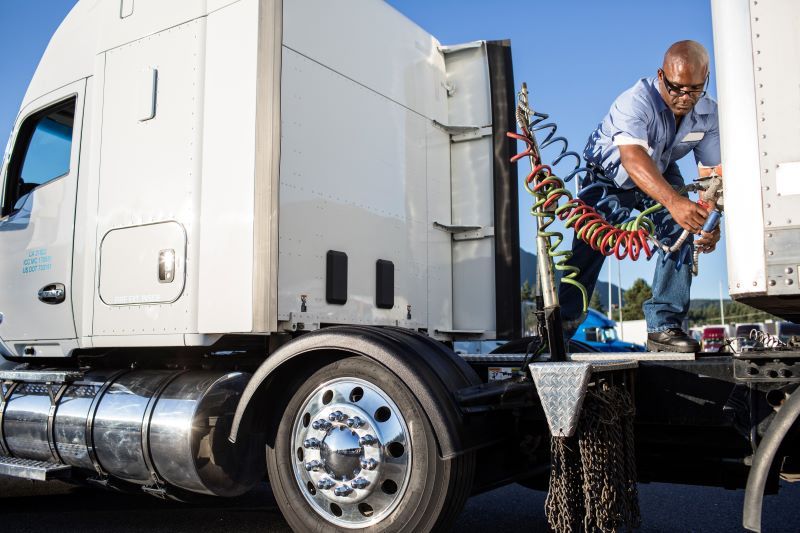

Trucking companies are always looking for ways to increase revenue. Often, the way to do this is to transport more and more goods. Unfortunately, you can’t just keep adding weight to your trucks. If you add too much weight, you could seriously damage your truck as well as pose a significant safety threat to your driver and other drivers on the road. That’s why all trucks come with an advertised payload capacity, which tells them how much weight the truck can handle. Here, we’ll dive into what payload capacity is and how you can potentially increase the weight you place on your truck bed.

Tow Capacity vs Payload
Before we can discuss how to maximize the payload of a truck, we must talk about tow capacity vs payload. Many people think tow capacity and payload are the same thing, but they would be wrong. The main difference between these two numbers is that tow capacity refers to the number of pounds a truck can pull while the payload of a truck refers to the number of pounds a truck can carry. Payload is the amount of weight you can add to your truck with cargo, for example. Towing capacity is the amount of weight you’re able to safely pull behind the truck with a trailer.
How to Calculate Payload Capacity
Figuring out the payload capacity of your truck is actually pretty simple. All you have to do is subtract your truck’s curb weight from its Gross Vehicle Weight Rating (GVWR). The number you get from doing that is your payload capacity.
Written as an equation, it is:
GVWR – Curb Weight = Payload Capacity
What Is Gross Vehicle Weight Rating?
If you’re unfamiliar with the term GVWR, it refers to the maximum weight your vehicle can carry. The following factors are considered in determining this number:
- Items inside the cabin
- The unladen vehicle weight, including fuel and engine fluids
- Cargo on the vehicle or in the truck bed
What Is Curb Weight?
The curb weight of a vehicle refers to its actual weight without cargo or non-factory installed items. It includes the weight of things like seats and rearview mirrors and everything else the truck needs to function, including gas and wiper fluid. Items that are not included in a vehicle’s curb weight are off-road tires, roll bars, winches, and larger wheels.
What Are the Federal Laws?
Even if you could increase payload capacity infinitely, there are federal regulations that dictate how much your vehicle can weigh. By federal regulation, big rigs are limited to a maximum loaded weight of 80,000 pounds including cargo. So, the payload capacity of any semi truck will vary based on the weight of the individual truck when empty. There are some general guidelines for how much different big rigs can carry. Flatbed trailers can generally load up to 48,000 pounds of cargo. Dry van trailers can usually load between 44,000 and 45,000 pounds. Finally, refrigerated trailers or reefers can usually load 42,500 to 44,000 pounds.
The reason for the differences in payloads for each type of trailer is the weight of the trailer itself. Flatbed trailers are usually made of aluminum, which is a very light material. That is why they are able to handle the highest payload while remaining within the 80,000-pound limit. There is more to a dry van, including a fiberglass body on top of the trailer. This increases the vehicle’s weight and thus reduces the payload by a few thousand pounds. Refrigerated trailers are even heavier because of the insulation required inside the walls to keep freight cool or frozen. In addition, they have to carry a refrigeration motor on the front of the trailer and an extra diesel tank under the trailer.
Despite these federal laws, individual states also have weight carrying limits for intrastate commerce. These allow for much higher payloads as long as additional axles are installed. That’s why it’s essential for you to check the rules for each state you operate in.

What Happens if a Truck is Overweight?
The payload capacity standards throughout the United States are a mix of Federal and State regulations and laws. Federal laws control maximum vehicle weights and axle loads on the Interstate system. Typically, overweight violations are not considered a criminal charge. They also don’t usually result in the driver’s license being revoked. However, if a truck is found to be overweight overall or on any one axle group, it could receive fines. In some cases, it may also be placed out of service. The amount of the fine depends on the state, as each state has its own formula for calculating fines.
How to Maximize Payload Capacity
There are a few ways you can incrementally increase a semi truck’s payload capacity, but none of these changes will lead to a substantial difference.
Optimize Packaging
One option that is available to just about anyone is to optimize the packaging of the items you are carrying. For example, you can find a way to fit more goods into boxes and therefore put more boxes on trucks. However, while you will be able to fit more cargo, you won’t have actually made any change to the payload capacity of a truck.
Cut Weight From Your Truck
Another option is to remove unnecessary things from your vehicle. Think about the trucks that FedEx and UPS use. They often remove additional seats or doors. Still, this will only lead to a small change in how much you can carry. After all, you’ll only be able to add as much weight as you can remove. In addition, laws and industry regulations could restrict your options for making these changes.
Optimize Your Route
Optimizing your delivery route also won’t change your semi truck’s payload capacity, but it can allow you to deliver more items. If you choose the best routes, you’ll be able to save valuable time, which translates into the ability to make more deliveries.

Choose Your Truck Wisely
The best thing you can do to maximize the payload capacity of your semi truck is to choose your truck wisely. As we’ve mentioned, different types of trucks – as well as different brands – have different payload capacities. If hauling the most goods possible is the most important thing for you, you’ll want to choose the semi that weighs the least.
Search our site
Related posts


The Importance of Regular Maintenance for Semi Trucks

Optimizing Semi Truck Fleet Management With Advanced Tracking and Monitoring Systems


